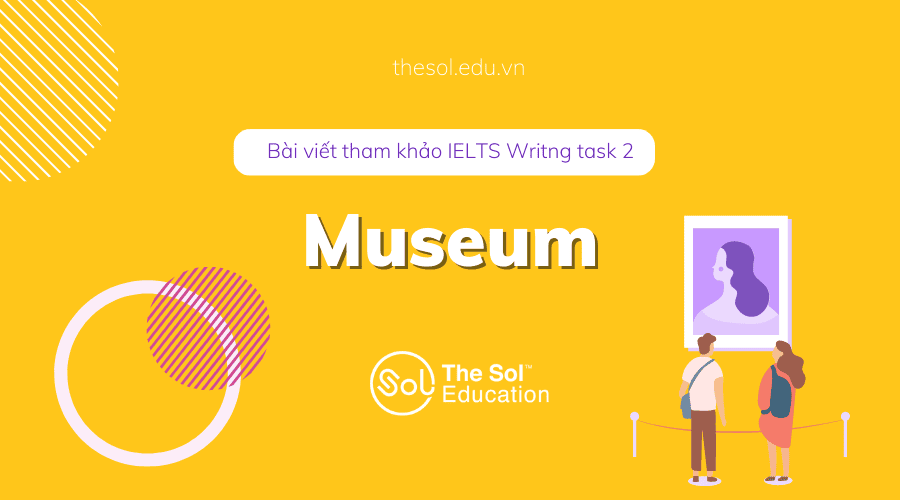Phần thi IELTS Writing task 2 chiếm 2/3 số điểm của cả bài thi IELTS Writing. Trong phần này, thí sinh nên dành 40 phút để hoàn thành bài luận có độ dài tối thiểu 250 từ, với văn phong và vốn từ trang trọng, mang tính học thuật để trình bày quan điểm của mình theo yêu cầu của đề bài. Trong bài viết này, chúng ta sẽ cùng khám phá bài luận mẫu về chủ đề Bảo tàng nhé.

Local people do not go very often to museums or historical sites. Why is that? What can be done to change the situation?
- Introduction: nêu vấn đề
- Body 1: Lý do tại sao người dân địa phương ít đến bảo tàng hoặc các địa điểm lịch sử:
- Body 2: Làm thế nào để thay đổi tình trạng trên:
- Conclusion
The dominance of tourists over local visitors in museums and historical sites is a common phenomenon. This essay explores two key reasons behind this trend and suggests potential solutions to encourage greater local participation in these cultural attractions.
The primary reason for the disparity in visitor numbers is that museums and historical sites are often significant attractions for tourists in every country. Travelers seek to immerse themselves in the history and sights of their destinations, making them the primary demographic for these galleries and landmarks. For instance, the Louvre Museum in Paris is a popular destination for tourists eager to explore the city's cultural heritage. Conversely, locals often have busy schedules and limited time to allocate specifically for visiting these places. Additionally, some may find such visits monotonous and prefer engaging in more entertaining activities during their free time.
To address the imbalance, measures can be taken to make these attractions more appealing to the local population. Enhancing the surrounding areas of museums and historical sites can significantly impact their attractiveness. For example, the establishment of high-quality restaurants with stunning landscapes near these sites can entice people to visit. Additionally, offering discounted entrance fees exclusively for locals can serve as an incentive for greater local participation. Lower prices may intrigue individuals who previously found visiting these places financially burdensome, making them more inclined to explore their cultural heritage.
In conclusion, the prevalence of tourists as the primary visitors to museums and historical sites can be attributed to their desire for historical knowledge and sightseeing. However, there are actions that can be taken to attract more local residents to these cultural landmarks. Creating appealing environments by introducing high-quality restaurants and providing discounted entrance fees exclusively for locals can contribute to greater local engagement. By implementing these measures, museums and historical sites can foster a sense of pride and connection among the local population, ensuring broader participation in preserving and appreciating their cultural heritage.
Dưới đây là một số từ vựng hữu ích được sử dụng để viết bài viết trên:
Các vấn đề xã hội trong IELTS Writing task 2 thực ra khá "thú vị" đúng không nào. Chúc các bạn mở rộng thêm được các ý tưởng cũng như chuẩn bị thật tốt cho bài thi của mình.
Tham khảo thêm lộ trình đào tạo IELTS chất lượng cao tại The SOL, lớp học sĩ số nhỏ, linh hoạt hình thức đào tạo online, offfline và cam kết đầu ra:
